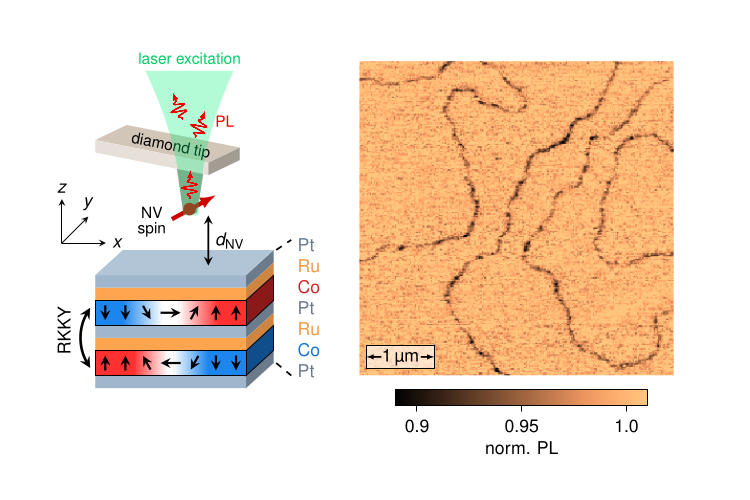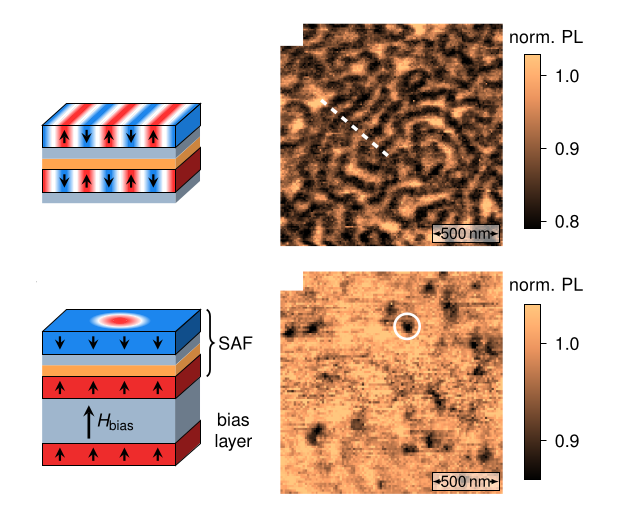Imaging non-collinear antiferromagnetic textures via single spin relaxometry
Finco et al, Nature Communications 12, 767 (2021) get the file
This work results from a collaboration between the Laboratoire Charles Coulomb in Montpellier, France, the Unité Mixte de Physique CNRS/Thales in Palaiseau, France and the Center for Nanoscience and Nanotechnology in Palaiseau, France. It was presented during the EMA early career e-seminar in November 2020, the video is available online.
We demonstrate here a new imaging mode of NV magnetometry, which relies on the detection of fluctuating magnetic field (magnetic noise) rather than the measurement of stray fields. The NV center is sensitive to magnetic noise with a frequency matching its electron spin resonance frequancy (about 3 GHz): such a noise accelerates the relaxation of the spin, which decreases the photoluminescence emitted by the NV center. Sources of magnetic noise can therefore be localized simply by monitoring the NV photoluminescence. We applied this technique to the imaging of magnetic textures in synthetic antiferromagnets, samples constitued of two coupled and oppositely magnetized ferromagnetic layers. We show that the photoluminescence emitted by the NV sample is smaller above the domain walls.

This drop of the photoluminescence is related to the presence of the confined spin waves inside the domain walls. The magnetic noise produced by these spin waves has a component at the NV detection frequency and therefore accelerates the relaxation. We checked this by directly measuring the relaxation time and found that it is indeed smaller above the domain walls.

Further measurements on other synthetic antiferromagnetic samples allowed us to observe spin spirals and magnetic skyrmions based on the same effect. This method is a priori not restricted to synthetic antiferromagnets ans should be applicable to a broad range of antiferromagnets.
